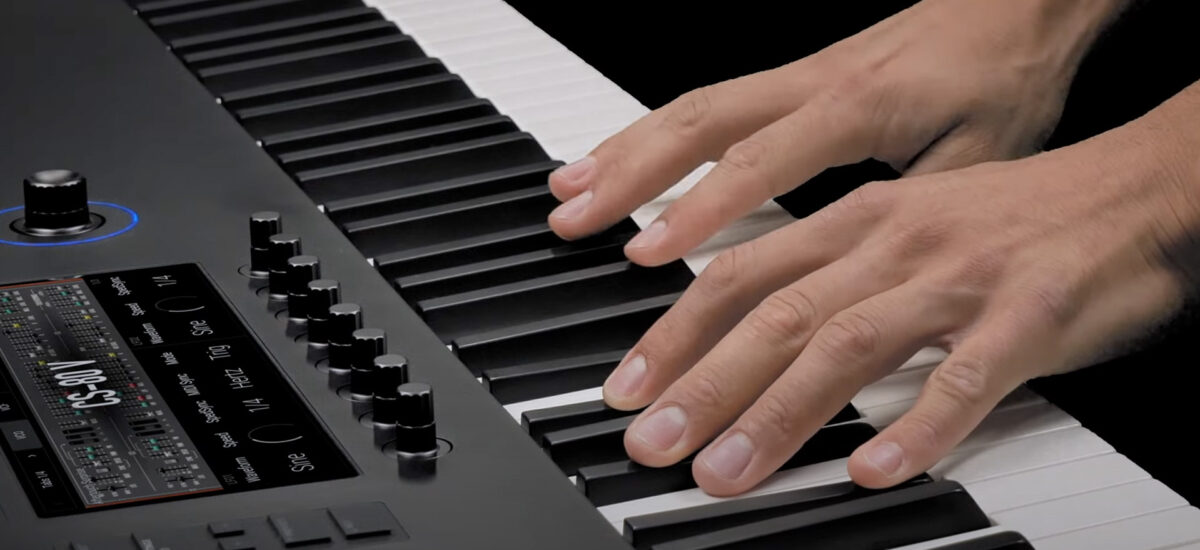
Polyphonic aftertouch offers a dynamic and nuanced way to interact with virtual instruments. Unlike traditional monophonic aftertouch, which affects all notes simultaneously, polyphonic aftertouch allows individual manipulation of each played note’s expression. This empowers you to infuse your performance with nuanced articulation and sensitivity.
The Kontrol S-Series keyboards now come with polyphonic aftertouch capabilities, as with several virtual instruments that can be used with the keyboard. We’ll explore how polyphonic aftertouch can bring your performances to life, as well as hear from our partners at Fatar who helped create the transformative Kontrol S88 MIDI keyboard.
What is polyphonic aftertouch?
Polyphonic aftertouch is a technology that enables individualized pressure sensitivity for each key on a MIDI controller or keyboard. Unlike monophonic aftertouch, which affects all keys uniformly, polyphonic aftertouch allows independent modulation for multiple notes played simultaneously. This capability grants musicians greater expressiveness and nuanced control over each note’s dynamics and modulation parameters.
How was polyphonic aftertouch developed for the Kontrol S-Series?
“The biggest challenge was not to alter the feel of the keyboard, which for us at Fatar is the most important aspect,” says Marco Ragni, CEO of Fatar. “We approached polyphonic aftertouch by developing for the first time in a musical keyboard with a new multi-sensors board that includes the key travel detection as normal and adding an FSR matrix to allow the detection of the key pressure independently.
There was close collaboration between the Fatar team and the Native Instruments team during the development phase. We wanted to develop a system that not only detects the hard pressure as it happens with the standard channel aftertouch, but captures all the gestures and the subtle variations related to key pressure that the musician naturally makes.
The new key actions developed by Fatar engineers in combination with the firmware developed by Native Instruments pushes polyphonic aftertouch into a new dimension, allowing the musicians to discover a new way to express their emotions into the music, and we know we are just at the beginning of a new era.”
What instruments can be played with polyphonic aftertouch?
This transformative feature enables musicians to get truly expressive performances with some of NI’s best virtual instruments, including Fables, Irish Harp, Ashlight, Hypha, and Vocal Colors.
Each instrument includes an Aftertouch section, which hosts several parameters for polyphonic aftertouch that affect the sound, including pitch, tuning, proximity, and filter settings, and more.
As more instruments from the Native Instruments collection become available with polyphonic aftertouch, you will be able to create nuanced, inspired performances in just a few easy steps.
Start using polyphonic aftertouch in your music creation
Now that you know what polyphonic aftertouch can do, it’s time to start using it in your music creation process. Explore the new S-Series MIDI keyboards that include polyphonic aftertouch as well as a direct Kontakt connection, deeper DAW integration, premium hardware, and more.















